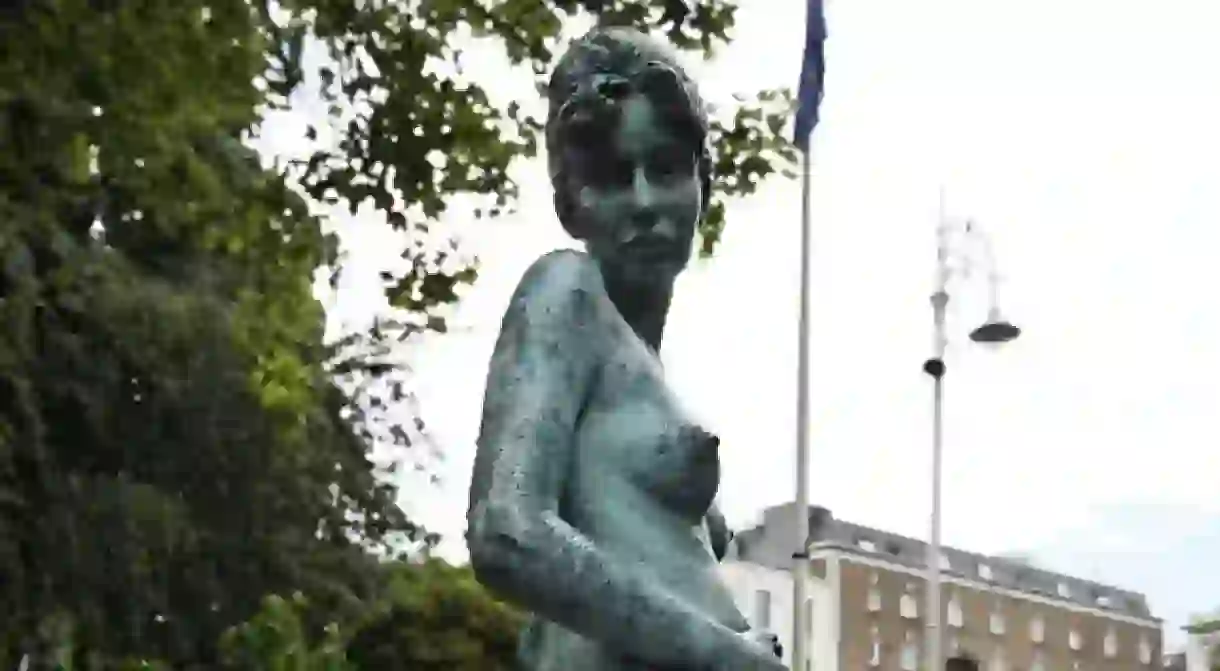A History Of Dublin's Merrion Square In 1 Minute

A grand garden square on the south side of Dublin city, Merrion Square was home to some of Ireland’s most famous citizens in the past, including Daniel O’Connell, Oscar Wilde and W.B. Yeats. Built in the late 18th century, the townhouses around Merrion Square are often referred to as ‘the heart of Georgian Dublin’. Continue reading to find out how they came to be.
Early Georgian Development
The 18th- and early 19th-century Dublin architecture that has come to be known as Georgian – constructed during the reigns of the four successive King Georges of Great Britain and Ireland, and sharing a distinctive architectural style – began in the north of the city, led by the Irish property developer and politician Luke Gardiner and his family. The palatial townhouses built around the north-side squares became the most sought-after residential areas for the city’s elite during the early 18th century, even housing the Church of Ireland Archbishop of Dublin.
The Rise of the Southside
After the Duke of Leinster (then the Earl of Kildare) completed his own Dublin residence – the largest aristocratic residence in the city – across the River Liffey on the south side in 1748, it led to a significant increase in demand for homes in the surrounding area, as yet undeveloped. Plans were made for three new Georgian developments close to the future Duke’s fabulous new home – at Merrion Square, Stephen’s Green and Fitzwilliam Square. Beginning in 1762, Merrion Square was mapped out and built over 30 years, with its own central ornamental garden and its western end facing onto the lawns of the what would become the ducal palace (and is now the seat of the Oireachtas, or Irish parliament). A sudden mass departure of the city’s wealthy from grand houses in the north to the new southern squares followed.

Famous Residents
The redbrick townhouses at Merrion Square welcomed many well-known residents over the next century. The poet and novelist Oscar Wilde lived at No. 1 and is now remembered with a statue in the corner of the park closest to his former home. His mother, Lady Wilde, held salons for friends like Bram Stoker and Isaac Butt at their house, which is now part of the American College Dublin. Daniel O’Connell – the beloved Irish political leader referred to as ‘the Emancipator’ – lived at No. 58, and W. B. Yeats at No. 82, on the square’s southerly flank. In 1817, the central garden in Merrion Square was intended as the original site of the Wellington Monument, dedicated to the Anglo-Irish soldier and statesman Arthur Wellesley, but after residents of the square complained, it was built in Phoenix Park instead.
The 1930s – Today
In the 1930s, the new Irish Free State government planned to demolish Merrion Square, viewing it as a symbol of British rule in Ireland. The plans were put aside during the war and never pursued. After the Bloody Sunday shootings in Northern Ireland in 1972, a crowd of Dubliners stormed the British Embassy at No. 39 Merrion Square and burned it down. Until the mid-70s, what is now the park was owned by the Roman Catholic Church, who had hoped to build a cathedral on the grounds. Only residents could access it using a key. But in 1974, then-Archbishop of Dublin Dermot Ryan leased it to Dublin Corporation for use as a public park. Today, the grand buildings around Merrion Square are mostly used as office space.













